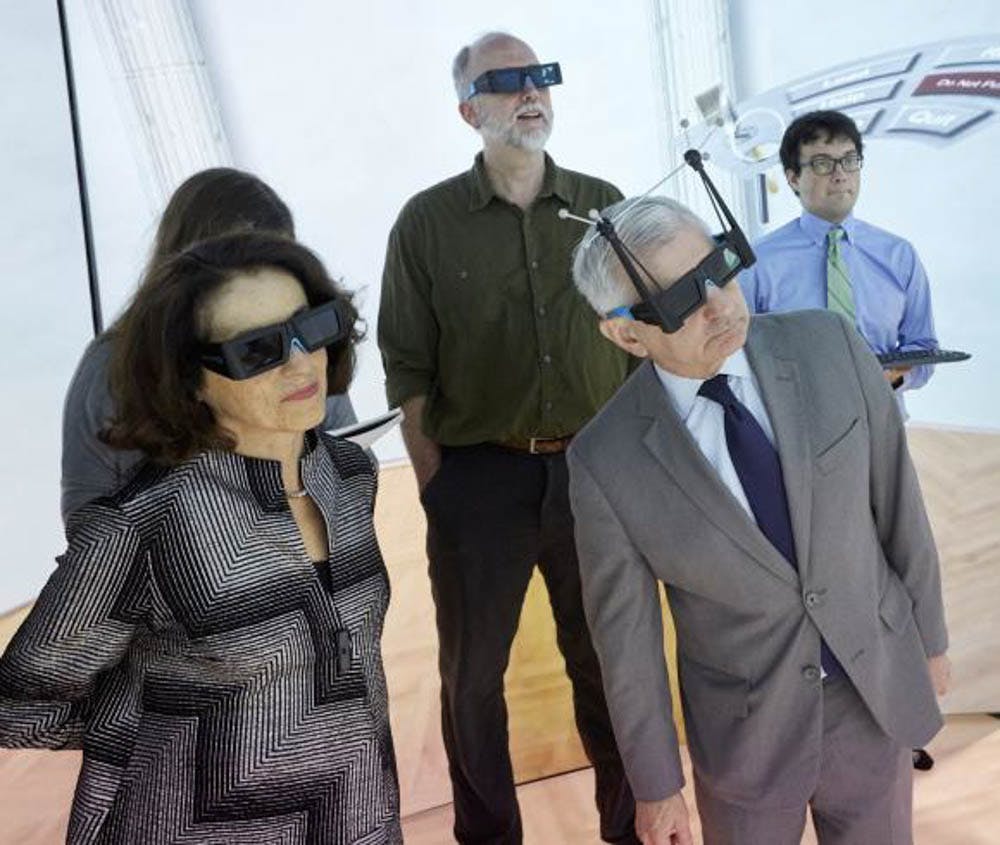France Córdova, director of the National Science Foundation, and U.S. Sen. Jack Reed, D-RI, came to campus Friday to tour several of the University’s science facilities supported by grants from the Foundation.
The NSF has granted $221 million to Rhode Island in the past five years, according to a University press release. The resulting research bolsters the economy, as it employs Rhode Islanders and attracts investments, Reed said.
The pair first met with Jill Pipher, professor of mathematics and director of the Institute for Computational and Experimental Research in Mathematics, to discuss the Institute’s goal of approaching societal challenges from new perspectives, according to the press release.
The ICERM was created with support from a $15.5 million grant from the NSF in 2010 and just received a new $17.5 million dollar grant “to continue and expand its mission to explore the intersection of mathematics and computation,” according to the press release.
The tour then stopped by the Institute at Brown for Environment and Society and the School of Engineering to meet with faculty members and discuss their research.
As a final stop, the tour met with David Laidlaw, professor of computer science, at the YURT Ultimate Reality Theater, which was funded in part by a $2 million NSF grant, Laidlaw said. Córdova and Reed stepped into the 360-degree virtual reality chamber where Laidlaw and some of his colleagues manipulated the display screen to showcase the YURT’s visualization capabilities.
The YURT “allows you to use your body’s natural navigational skills,” Laidlaw said as Reed and Córdova took turns controlling the chamber with their body movements. The two also experimented with manipulating detailed images of a human brain as well as Mars’ surface.
At one point, the screen flipped to a visualization of a footprint, and Professor of Biology Stephen Gatesy stepped in to explain that he is using the YURT as part of a project to connect the movements of a guinea fowl’s foot to the movement of dinosaurs.
After finishing the tour of the facilities, Córdova and Reed emphasized the importance of the scientific research conducted at the University.
The NSF has a “focus on collaborative and translational research,” and the University consistently sees faculty members apply for NSF grants with those goals in mind, Córdova said.
As a signal of the high-quality research conducted on campus, the University has produced multiple NSF CAREER Award recipients — the Foundation’s highest honor for junior faculty — Córdova added.
While praising the scholarly impact of scientific research, Reed also stressed the economic effects of large-scale research projects. Rhode Island needs to work on converting the state’s research potential into production and more investment, he added. Compared to other areas of the country, “we have equal or more talent,” but the state needs to build up the infrastructure to support its imagination, he added.





